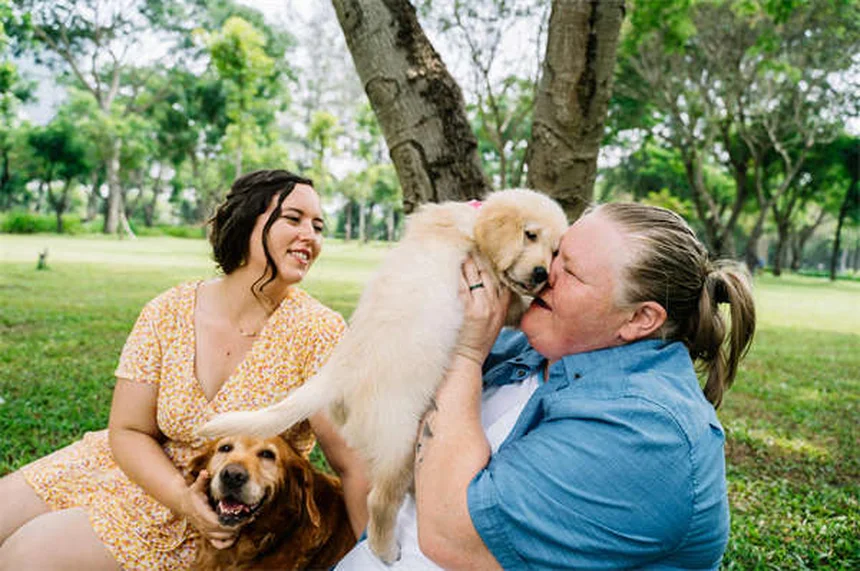What is sago palm poisoning in dogs? The answer is terrifying: sago palms are one of the deadliest plant threats to your furry friend. Every part of this tropical-looking plant contains lethal toxins that can kill a dog within hours. I've seen too many heartbreaking cases where pet owners didn't realize the danger until it was too late.The scary truth? Just one seed from a sago palm can be fatal. Within minutes of ingestion, your dog could start vomiting blood, and within days, face complete liver failure. As a pet owner myself, I want to arm you with the knowledge to protect your pup. We'll cover the immediate symptoms to watch for, emergency steps to take, and why prevention is your best defense against this silent killer in your backyard.
E.g. :Adenovirus in Guinea Pigs: Symptoms, Treatment & Prevention Tips
Advertisement
- 1、Why You Should Never Let Your Dog Near a Sago Palm
- 2、Spotting Trouble: Symptoms to Watch For
- 3、The Scariest Part: Liver Failure
- 4、Emergency Action Plan
- 5、The Hard Truth About Survival Rates
- 6、Prevention Is Your Best Defense
- 7、Final Thoughts on Keeping Dogs Safe
- 8、Beyond Sago Palms: Other Common Household Dangers
- 9、Creating a Pet-Safe Environment
- 10、When Prevention Fails: Emergency Preparedness
- 11、The Power of Observation
- 12、Turning Knowledge Into Action
- 13、FAQs
Why You Should Never Let Your Dog Near a Sago Palm
The Deadly Beauty of Sago Palms
Let me tell you about these sneaky plants that look gorgeous but pack a deadly punch for our furry friends. Sago palms might seem like harmless tropical decorations, but they're actually one of the most dangerous plants your dog could encounter. You'll find them in warm states like Florida and Georgia, but they're sold everywhere because people love their exotic look.
Here's the scary part: Every single piece of this plant is poisonous to dogs - the leaves, the trunk, and especially the seeds. We're talking about a plant so toxic that just one seed can kill a medium-sized dog. That's like a single M&M being deadly to a child!
Meet the Toxic Trio
The sago palm contains three nasty compounds that team up to wreak havoc:
| Toxin | What It Does | Timeframe |
|---|---|---|
| Cycasin | Attacks the liver and digestive system | First 15 minutes to hours |
| BMAA | Causes neurological problems | Within 4 hours |
| Mystery Toxin | More neurological damage | Within 4 hours |
Spotting Trouble: Symptoms to Watch For
 Photos provided by pixabay
Photos provided by pixabay
The First Warning Signs
If your pup gets into a sago palm, you'll likely notice stomach issues first. These can appear crazy fast - sometimes within 15 minutes! Keep an eye out for:
• Excessive drooling (like they just saw a steak)
• Refusing food (very unlike most dogs!)
• Vomiting (possibly with blood)
• Diarrhea (also possibly bloody)
When Things Get Serious
Within about four hours, the neurological symptoms kick in. This is when you'll really start panicking:
Your normally energetic pup might suddenly act drunk - stumbling around, collapsing, or developing tremors. Some dogs experience full-blown seizures or even slip into comas. I don't know about you, but just typing this makes me want to go check my backyard for any suspicious plants!
The Scariest Part: Liver Failure
Why the Liver Matters
Here's something that might surprise you - did you know that even if your dog seems to recover from the initial symptoms, they're not out of the woods? The real danger comes 2-3 days later when liver failure sets in.
You'll notice their belly might swell up like a balloon, they'll drink and pee constantly, and their eyes/gums might turn yellow (that's jaundice). They might pass black, tarry stools or start bleeding from their nose or mouth. At this point, it becomes a race against time to save their life.
Emergency Action Plan
 Photos provided by pixabay
Photos provided by pixabay
The First Warning Signs
If you even suspect your dog nibbled on a sago palm, here's what you need to do RIGHT NOW:
1. Grab your keys and head to the nearest emergency vet hospital. Time is absolutely critical here.
2. While someone drives, call the Pet Poison Helpline (855-764-7661) or ASPCA Animal Poison Control (888-426-4435).
3. If possible, bring a piece of the plant or take clear photos to help identification.
Important note: Don't try to make your dog vomit unless a vet specifically tells you to. You could accidentally make things worse!
What the Vet Will Do
When you arrive at the clinic, the veterinary team will spring into action. They'll start with a complete physical exam and likely run blood tests to check liver values. Here's the tricky part - these tests might look normal at first, even while the toxins are silently destroying your dog's liver.
The vet will probably want to hospitalize your pup for at least 48-72 hours for intensive care. This includes IV fluids, liver protectants, medications to control vomiting and seizures, and possibly even blood transfusions. It's an all-hands-on-deck situation.
The Hard Truth About Survival Rates
Why Early Treatment Matters
Here's a sobering fact - even with aggressive treatment, only about half of dogs survive sago palm poisoning. But before you panic, let me explain why getting help fast makes all the difference.
Dogs treated within the first few hours have much better odds than those who wait until symptoms appear. The sooner the vet can start decontamination (making them vomit safely, giving activated charcoal), the better chance they have of preventing severe liver damage.
 Photos provided by pixabay
Photos provided by pixabay
The First Warning Signs
For survivors, the battle isn't always over. Many dogs need liver medications for weeks or even the rest of their lives. Some suffer permanent liver damage that requires special diets and ongoing care. This isn't just a "one-time treatment and done" situation - it's often a lifelong commitment.
Prevention Is Your Best Defense
Make Your Home a Safe Zone
Let's be real here - why take the risk? If you have dogs, just don't keep sago palms in or around your home. It's not worth the potential heartbreak. I know they're pretty plants, but so are many non-toxic alternatives.
For those living in sago palm territory (looking at you, Florida and Georgia), make it a habit to scan your yard regularly. Those seeds can travel surprisingly far when the wind blows. Think of it like picking up dangerous litter in your dog's playground.
Educate Your Family and Friends
Here's something important many people don't think about - make sure everyone in your household knows about this danger. Your well-meaning mother-in-law might bring over a beautiful sago palm as a gift without realizing the risk. A quick "Hey, these plants are deadly to Fido" conversation could prevent tragedy.
Final Thoughts on Keeping Dogs Safe
Knowledge Is Power
Now that you know about sago palm toxicity, you're already ahead of many pet owners. The more we spread awareness about these dangers, the more dogs we can protect. Share this information with your dog-loving friends - you might just save a life.
Remember, our pups rely on us to keep them safe from hidden dangers like these. A little vigilance goes a long way in preventing heartbreaking accidents. Now go give your dog some safe, healthy treats and maybe do a quick scan of your yard - just to be sure!
Beyond Sago Palms: Other Common Household Dangers
Plants That Pack a Punch
While sago palms are definitely the worst offenders, they're not the only plants that can cause trouble for your pup. Lilies might look innocent in your flower arrangement, but they can cause kidney failure in cats. And those beautiful azaleas in your garden? Just a few leaves can make your dog seriously sick.
I remember when my neighbor's golden retriever got into their tulip bulbs - let's just say it wasn't pretty. The poor guy spent two days at the vet with vomiting and diarrhea. That's why I always recommend checking the ASPCA's toxic plant list before adding any new greenery to your home.
Hidden Hazards in Your Kitchen
You'd be surprised how many everyday foods can be dangerous for dogs. Chocolate is the classic example, but did you know that grapes and raisins can cause sudden kidney failure? Even small amounts of xylitol (that sugar substitute in gum and peanut butter) can trigger life-threatening low blood sugar.
Here's a quick comparison of some common food dangers:
| Food | Danger Level | Symptoms |
|---|---|---|
| Chocolate | High (dark chocolate worst) | Vomiting, seizures, heart issues |
| Grapes/Raisins | Extreme | Kidney failure within 24 hours |
| Xylitol | Extreme | Low blood sugar, liver failure |
| Onions/Garlic | Moderate-High | Anemia, weakness |
Creating a Pet-Safe Environment
Puppy-Proofing Like a Pro
You baby-proof for human kids, right? Well, our furry kids need the same protection. Start by getting down on all fours (yes, literally) to see the world from your dog's perspective. Those dangling electrical cords? Perfect for chewing. That trash can without a lid? An all-you-can-eat buffet.
I learned this the hard way when my beagle puppy somehow managed to open a child-proof medication bottle. Now everything goes in high cabinets with actual locks. Pro tip: If you can open it with one hand, so can your determined dog!
The Medicine Cabinet Minefield
Human medications cause thousands of pet poisonings every year. Ibuprofen and acetaminophen are especially dangerous - just one pill can cause stomach ulcers or liver damage in a small dog. And don't think prescription meds are safe either - antidepressants and ADHD medications are common culprits.
Here's something most people don't consider: pets can get into medications that fall on the floor or get left on nightstands. That's why I always do the "pill check" before letting my dogs into a room - scanning for any dropped medications like I'm looking for lost diamonds!
When Prevention Fails: Emergency Preparedness
Building Your Pet First-Aid Kit
Every dog owner should have a well-stocked pet first-aid kit. But here's the thing - it's not just about having the supplies, it's about knowing how to use them. For example, did you know hydrogen peroxide can induce vomiting in dogs (but only when directed by a vet)?
Your kit should include basics like gauze, adhesive tape, and a pet thermometer, but also specific items like activated charcoal (for toxin absorption) and a pet carrier for transport. I keep mine in an old lunchbox with a big red cross on it - no confusing it with the human first-aid supplies!
Knowing Your Emergency Options
Here's a question that might make you pause: do you know where your nearest 24-hour veterinary emergency clinic is located? I didn't - until I needed one at 2 AM. Now I have the address programmed into my phone and a backup option just in case.
You should also save important numbers in your contacts: your regular vet, the closest emergency clinic, and the ASPCA Poison Control (888-426-4435). Trust me, when panic sets in, you don't want to be googling "dog ate chocolate help" while your pup is getting sicker by the minute.
The Power of Observation
Reading Your Dog's Signals
Dogs can't tell us when they feel sick, but they give plenty of clues if you know what to look for. Changes in behavior are often the first red flag - is your food-motivated dog suddenly ignoring treats? Does your energetic pup want to sleep all day?
I once noticed my dog licking his lips excessively and thought nothing of it - turns out it was an early sign of nausea. Now I pay attention to even small changes in behavior. Remember: You know your dog better than anyone, so trust your gut if something seems off.
When to Sound the Alarm
Some symptoms always warrant an immediate vet visit: seizures, difficulty breathing, collapse, or bleeding. But what about those gray-area symptoms? Here's my rule of thumb: if you're debating whether to call the vet, just call. It's always better to be safe than sorry.
The veterinary staff would much rather answer your "silly" question than deal with a preventable tragedy. I've called my vet about everything from mysterious rashes to questionable poop - and they've never made me feel foolish for being cautious.
Turning Knowledge Into Action
Making Safety a Habit
Pet safety isn't a one-and-done deal - it's an ongoing practice. I like to do a "safety sweep" of my house every Sunday while I'm doing other chores. Quick check of plants, medications, and food storage takes less than five minutes but could save my dog's life.
You can even make it fun! Turn it into a game with your family - who can spot the most potential hazards? Winner gets to choose what's for dinner (though maybe keep the chocolate dessert for humans only).
Sharing the Wisdom
Now that you're armed with all this knowledge, don't keep it to yourself! Share what you've learned with other pet owners in your life. Post about it on social media, chat with fellow dog parents at the park, or even just mention it to your vet during your next visit.
I started a neighborhood pet safety group after a close call with my dog, and now we all look out for each other's pets. It's amazing how much safer our furry friends can be when we work together as a community!
E.g. :Sago Palm Poisoning in Dogs | PetMD
FAQs
Q: How quickly do sago palm poisoning symptoms appear in dogs?
A: Sago palm poisoning symptoms can appear frighteningly fast - sometimes within 15 minutes of ingestion! The first signs you'll notice are usually gastrointestinal: excessive drooling (like your dog just saw a steak), refusing food (very unlike most dogs!), vomiting (possibly with blood), and diarrhea. But here's what really scares me as a pet owner: within about four hours, neurological symptoms kick in. Your pup might start acting drunk - stumbling, collapsing, or developing tremors. Some dogs experience full-blown seizures or even slip into comas. The liver damage typically shows up 2-3 days later, which is why immediate vet care is absolutely crucial.
Q: What part of the sago palm is most toxic to dogs?
A: While all parts of the sago palm are dangerous, the seeds (nuts) are the most toxic. Here's a chilling fact: ingestion of just one seed can kill a medium-sized dog. That's like a single M&M being deadly to a child! The plant contains three nasty compounds that team up to wreak havoc: Cycasin (attacks the liver), BMAA (causes neurological problems), and a mystery toxin that adds more neurological damage. As someone who's treated poisoned dogs, I can tell you that even small amounts of leaves or bark can cause severe illness. Bottom line? No part of this plant is safe around your pets.
Q: What should I do if my dog ate a sago palm?
A: Don't wait - act immediately! Here's your emergency action plan: 1) Grab your keys and head to the nearest veterinary ER right now - this is literally a race against time. 2) While someone drives, call the Pet Poison Helpline (855-764-7661) or ASPCA Animal Poison Control (888-426-4435). 3) If possible, bring a piece of the plant or take clear photos to help identification. Important note: Don't try to make your dog vomit unless a vet specifically tells you to - you could accidentally make things worse! I've seen too many cases where well-meaning owners wasted precious time with home remedies instead of rushing to professional help.
Q: Can dogs survive sago palm poisoning?
A: The hard truth is that only about 50% of dogs survive sago palm poisoning, even with aggressive treatment. But here's the hopeful part: dogs treated within the first few hours have much better odds than those who wait until symptoms appear. The survival rate drops dramatically once liver failure begins. For survivors, many need liver medications for weeks or even the rest of their lives. Some suffer permanent liver damage requiring special diets. As a vet tech, I always emphasize that prevention is infinitely better than treatment when it comes to sago palms - these plants simply shouldn't be anywhere near your pets.
Q: How can I prevent sago palm poisoning in my dog?
A: Prevention is absolutely your best defense. Here's my straightforward advice: if you have dogs, don't keep sago palms in or around your home. They're not worth the risk - there are plenty of beautiful, non-toxic alternatives. For those living in sago palm territory (especially Florida and Georgia), make yard scans part of your routine. Those deadly seeds can travel surprisingly far when the wind blows. Also, educate everyone in your household about this danger - your well-meaning neighbor might gift you a sago palm without realizing the risk. Remember, our pups rely on us to protect them from hidden dangers like these.
